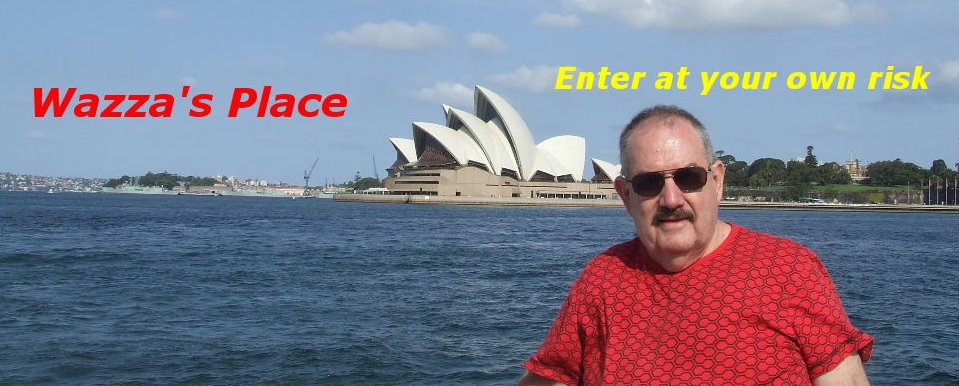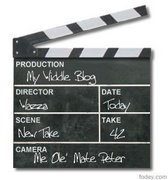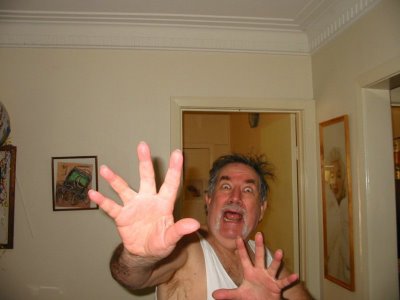Sir Joseph Banks, "The Father of Australia",
Recently my sister, Denise who lives in
The other book she sent me was “The Endeavour Journal of Joseph Banks”, about the voyage Captain James Cook made in the Endeavour and his discovery of the east coast on New
I had learnt of both persons during my early school days and reading through the journal, I thought some of the discoveries made by Joseph Banks could make for a interesting post.

The voyage of the Endeavour, commanded by James Cook, from 1768 to 1771, inaugurated the history of European settlement in
Cook had been instructed to sail to Tahiti to observe the transit of the planet Venus across the face of the sun, an event that was predicted to occur on the
Cook was further instructed to search for the legendary southern continent. The west coast of
 ...................................Captain James Cook
...................................Captain James Cook
He then turned west and sailed up the east coast of Australia - the first European to do so - naming it first `New Wales' and then `New South Wales' and taking possession of it in the name of King George III at an island he named 'Possession Island' off the tip of Cape York. The voyage had been undertaken at the urging of the Royal Society, a distinguished assembly- of those interested in all aspects of science. One of its fellows was Joseph Banks, young, rich and passionate about natural history.
Joseph Banks was born in London into a wealthy family, on the 13th February 1743. Joseph Banks received his earliest education at home under private tuition. At age nine he attended
 Portrait of Joseph Banks after his return in 1774.
Portrait of Joseph Banks after his return in 1774.
The Endeavour sailed from
Banks brought a substantial library of over 100 volumes preserving bottles, nets, hooks, trawls, devices for catching insects, a sort of underwater telescope, artists' materials, pap for drying and storing specimens - all the paraphernalia - the natural historian. He also took a guitar which he was skilled in playing, and his dogs - including greyhounds for chasing game. It was alleged that he spent 10,000 pounds on the voyage.
He was promptly appointed to a joint Royal Navy/Royal Society scientific expedition to the
 The Endeavour beached after being holed on the Great Barrier Reef.
The Endeavour beached after being holed on the Great Barrier Reef.
The condition of the Endeavour made sailing back to
On the return to England Banks had around 30,000 plant specimens, revealing 1,400 species new to science, and about one thousand species of animal were collected. Drawings of nearly 1,000 plants and 398 of animals had been made.
Two drawings by Banks taken along the East Coast.
He actively supported the proposal of
As befits someone with such a role in opening the South Pacific to Europe, his name dots the map of the region, Banks Peninsula on South Island, New Zealand, the Banks Islands in modern-day Vanuatu and Banks Island in the Northwest Territories, Canada.
Because of his keen interest in the colony Banks has been called 'the Father of
The Banksia, was named after the botanist Sir Joseph Banks, consists of approximately 70 species of shrubs and trees. All are Australian natives except for one species from
Flowers are tightly-packed, candle-like spikes that gradually open from the base upwards. These are followed by woody seeds cones that often contain the remnants old flowers. Flowers, foliage and seed capsules are prized by the cut flower industry. The flowers are an abundant source of nectar for honeyeating birds and insects, which in turn attract other insect-eating birds. Larger birds such as parrots and cockatoos feed on the seeds.
His photo also appeared on the paper five dollar note in the Australian currency before it was replaced by the new plastic currency.
Banks health began to fail early in the nineteenth century and he suffered much from gout every winter. After 1805 he practically lost the use of his legs, and had to be wheeled to his meetings in a chair. His mind remained as vigorous as ever. On
This is just a small selection of the life of Sir Joseph Banks. More detailed writings can be viewed by searching in Google or Yahoo. The journal of the voyage of the Endeavour by Joseph Banks, and edited by Paul Brunton is well worth the read. The original journal is preserved in the Mitchell Library at the Sate Library of








11 comments:
I can remember being taught about Joseph Banks at school, but as it was in those days, it was a dry dusty lesson that none of us were interested in. However, since then I have read a lot about him and realise that we have a lot to thank him for.
Another interesting figure of history connected with Australia is Matthew Flinders...of course, he isn't heard about as much, but is an interesting character regardless.
Thanks for the trip back in time, Warren. Your research is great.
I try not to learn much at this hour of the AM but you've forced the issue here. He's sort of the Lewis and Clark of that area. A great read and I thank you for all of this.
The paintings of the man would indicate a case of chronic constipation however.
Hi Wazza, another well researched article that you have made interesting for us all thanks.
Hey thanks for checking out my blog and for the camera advice- I just went to a fitness show last evening and all my pics are blurry???!!! I need a new camera that or I need to learn how to use one LOL
have a great day:)
Hi Warren ~~ Another good post that
was more interesting than when we had to learn about it at school. One of
our earliest gardeners. Thanks for your comments at my place and also for the joke.Take care, Warren,
Kindest regards, Merle.
I know quite a bit about James Cook from my love of history but I didn't know who Banks was but now I do thanks to you.
Great post
Have a nice day
Hi Warren it is great to be back, although I was unable to comment on Merle's site as well as some others Grrrrr!!. Thanks for visit. I really enjoyed the post it was most interesting. Also loved the Trams, I have a real passion for Trams and old trains.
Cheers Margaret
Banks was quite a good artist. His drawings are very detailed.
I suppose if science had not worked out for him, he could have taken up painting portraits instead.
I share his interest in botany. I am a lover of plants and trees and flowers. Just give me trees and water, and I'm a happy camper. I would not do well in the desert.
I really like the tights men wore back then. They really showed off their legs.
(Actually, they look like GOOBERS!)
Great post, Wazza and they must be very interesting books. Friends of mine who came out here to Australia back in the fifties from Germany would enjoy reading them as they're extremely interested in Australian history. So I must remember to tell them about these two books.
I grew up in Bankstown, seriously.
Good for people to know.
Post a Comment